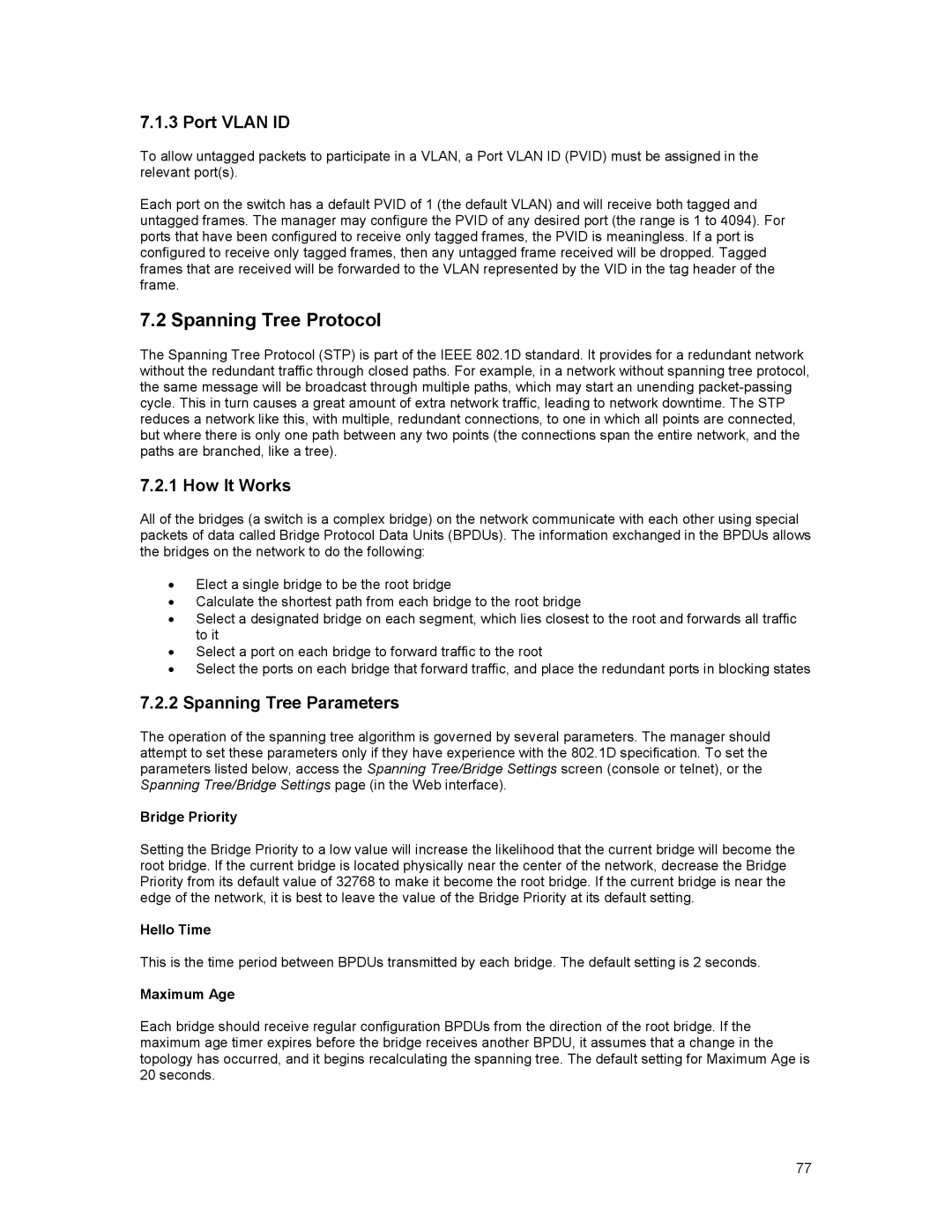7.1.3 Port VLAN ID
To allow untagged packets to participate in a VLAN, a Port VLAN ID (PVID) must be assigned in the relevant port(s).
Each port on the switch has a default PVID of 1 (the default VLAN) and will receive both tagged and untagged frames. The manager may configure the PVID of any desired port (the range is 1 to 4094). For ports that have been configured to receive only tagged frames, the PVID is meaningless. If a port is configured to receive only tagged frames, then any untagged frame received will be dropped. Tagged frames that are received will be forwarded to the VLAN represented by the VID in the tag header of the frame.
7.2 Spanning Tree Protocol
The Spanning Tree Protocol (STP) is part of the IEEE 802.1D standard. It provides for a redundant network without the redundant traffic through closed paths. For example, in a network without spanning tree protocol, the same message will be broadcast through multiple paths, which may start an unending
7.2.1 How It Works
All of the bridges (a switch is a complex bridge) on the network communicate with each other using special packets of data called Bridge Protocol Data Units (BPDUs). The information exchanged in the BPDUs allows the bridges on the network to do the following:
•Elect a single bridge to be the root bridge
•Calculate the shortest path from each bridge to the root bridge
•Select a designated bridge on each segment, which lies closest to the root and forwards all traffic to it
•Select a port on each bridge to forward traffic to the root
•Select the ports on each bridge that forward traffic, and place the redundant ports in blocking states
7.2.2 Spanning Tree Parameters
The operation of the spanning tree algorithm is governed by several parameters. The manager should attempt to set these parameters only if they have experience with the 802.1D specification. To set the parameters listed below, access the Spanning Tree/Bridge Settings screen (console or telnet), or the Spanning Tree/Bridge Settings page (in the Web interface).
Bridge Priority
Setting the Bridge Priority to a low value will increase the likelihood that the current bridge will become the root bridge. If the current bridge is located physically near the center of the network, decrease the Bridge Priority from its default value of 32768 to make it become the root bridge. If the current bridge is near the edge of the network, it is best to leave the value of the Bridge Priority at its default setting.
Hello Time
This is the time period between BPDUs transmitted by each bridge. The default setting is 2 seconds.
Maximum Age
Each bridge should receive regular configuration BPDUs from the direction of the root bridge. If the maximum age timer expires before the bridge receives another BPDU, it assumes that a change in the topology has occurred, and it begins recalculating the spanning tree. The default setting for Maximum Age is 20 seconds.
77
